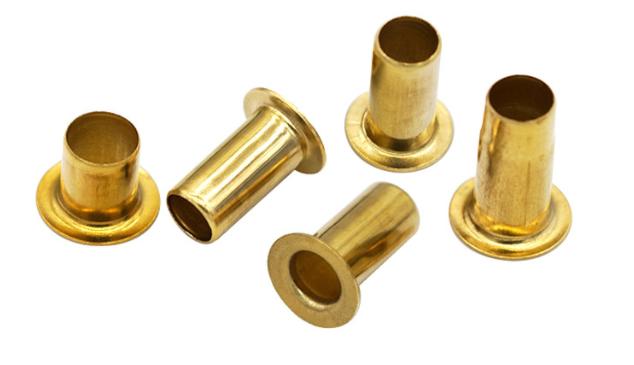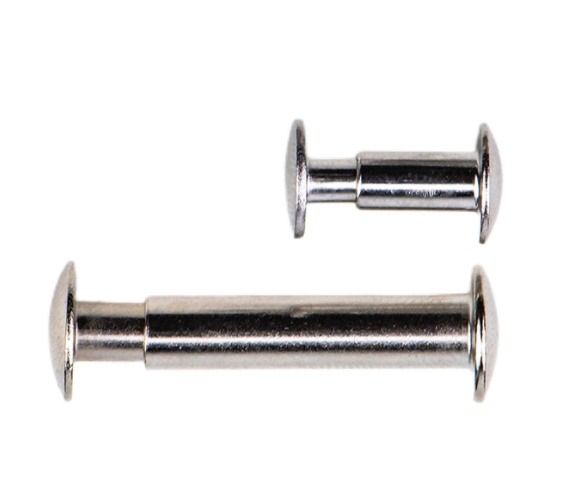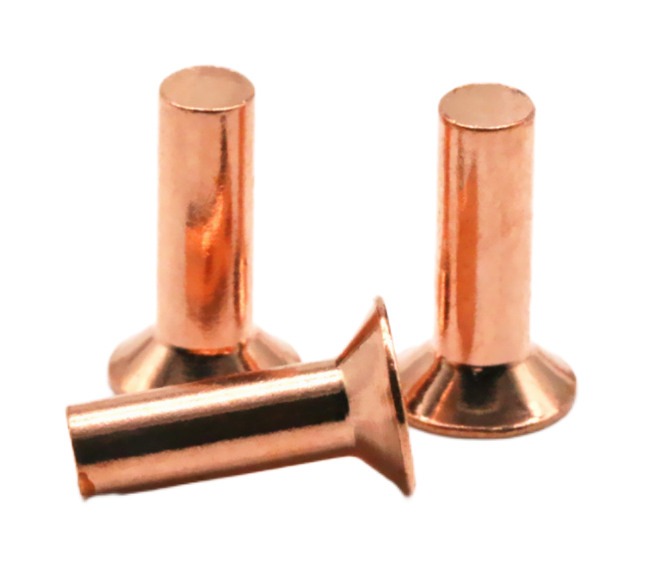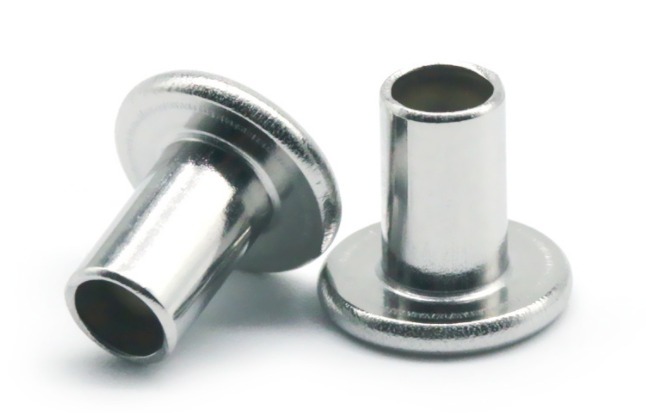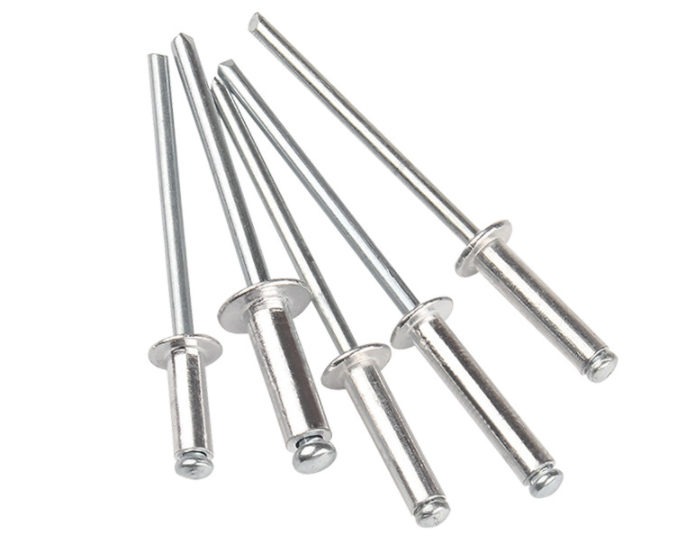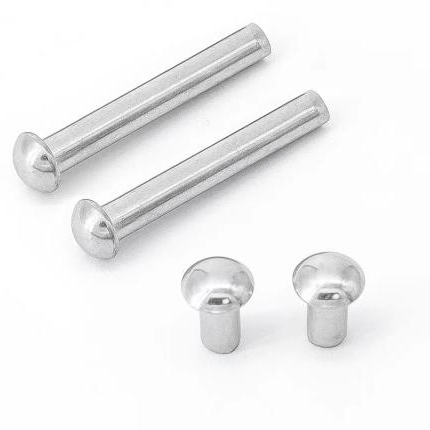Solid Rivets and Blind Rivets: Which One to Choose?
Rivets are a type of mechanical fastener used to join two or more materials together. They are commonly used in a wide range of industries, including construction, automotive, and aerospace. The importance of rivets lies in their ability to create a strong, reliable joint that can withstand high levels of stress and vibration. When choosing a rivet for a particular application, it is important to consider the type of material being joined, the required strength of the joint, and the accessibility of the joint from both sides. In this article, we mainly introduce two types of rivets including solid rivets and blind rivets and which one is best for your application to choose.
What are Solid Rivets and Blind Rivets
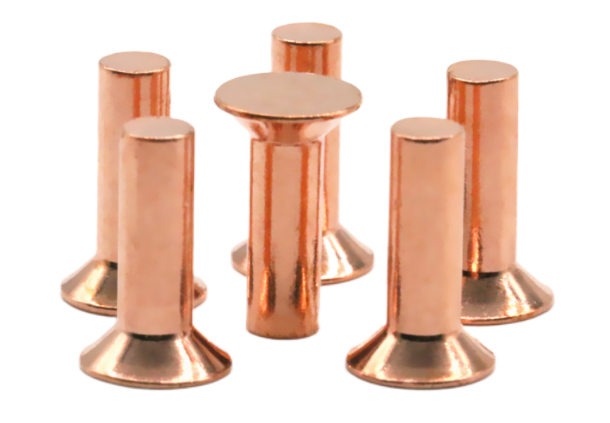
Solid rivets
Solid rivets are a type of rivet that consists of a smooth cylindrical shaft with a head at one end and a tail at the other. They are inserted into pre-drilled holes and then deformed using a hammer or rivet gun. Some of the advantages of using solid rivets include high strength, durability, and resistance to vibration. They are also a good choice for applications where the joint will be exposed to extreme temperatures or corrosive environments. However, solid rivets require access to both sides of the material being joined, which can be a challenge in some applications. They also require special tools and training to install correctly.
Blind rivets
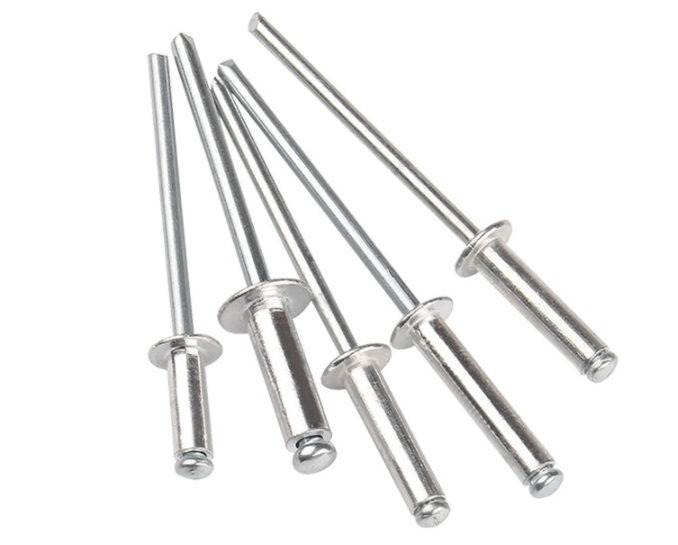
Blind rivets, also known as pop rivets, are a type of rivet that can be installed from one side of the material being joined. They consist of a tubular body with a mandrel that is pulled into the body during installation, causing the body to expand and form a head on the blind side of the material. Blind rivets are commonly used in applications where access to the back side of the material is limited. They are also available in a range of materials, including aluminum, steel, and stainless steel. Blind rivets have the advantage of being easy to install and requiring only one-sided access. They are also available in a variety of head styles, including dome, countersunk, and large flange.
Comparison between Solid Rivets and Blind Rivets
Solid rivets and blind rivets differ in several key ways, including their head types and shapes, installation methods and tools required, material compatibility and strength, joint accessibility and versatility, and cost and availability.
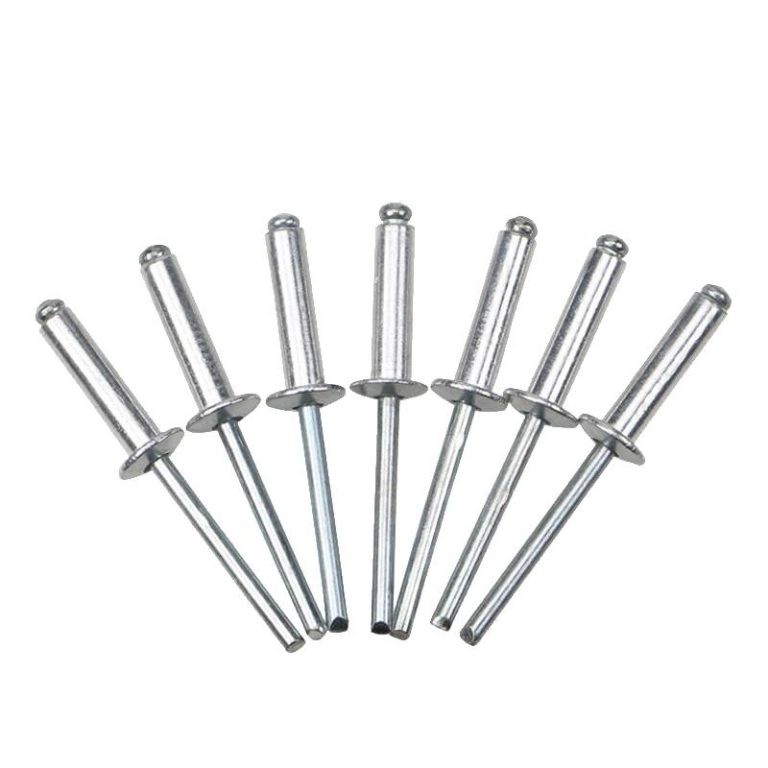
- Head Types and Shapes: Solid rivets typically have a rounded or flat head, while blind rivets can have a range of head shapes, including dome, countersunk, and large flange. The choice of head shape depends on the specific application and aesthetic requirements.
- Installation Methods and Tools Required: Solid rivets require access to both sides of the material being joined and must be installed using a hammer or rivet gun. Blind rivets, on the other hand, can be installed from one side using a hand or pneumatic tool. Blind rivets also have the advantage of requiring less skill to install, making them a popular choice for DIY projects and hobbyists.
- Material Compatibility and Strength: Solid rivets are typically made from high-strength materials such as steel, stainless steel, or titanium. Blind rivets are available in a variety of materials, including aluminum, steel, stainless steel, and copper. The choice of material depends on the specific application and the required strength of the joint.
- Joint Accessibility and Versatility: Solid rivets require access to both sides of the material being joined, which can be a challenge in some applications. Blind rivets, on the other hand, can be installed from one side, making them ideal for applications where access is limited. Blind rivets are also available in a variety of lengths and diameters, making them more versatile than solid rivets in some applications.
- Cost and Availability: Solid rivets are generally more expensive than blind rivets due to the additional labor and tools required for installation. Solid rivets also require more skill and training to install correctly, which can add to the cost. Blind rivets are readily available at most hardware stores and online retailers, making them a more convenient and accessible option for DIY projects and small-scale applications.
How to Choose Between Solid Rivets and Blind Rivets
When choosing between solid rivets and blind rivets, it is important to consider the specific requirements of the application, including the type of materials being joined, the required strength of the joint, and the accessibility of the joint from both sides. Solid rivets offer high strength and durability but require access to both sides of the material being joined and specialized tools for installation. Blind rivets are easy to install and can be installed from one side of the material, making them ideal for applications with limited access. The choice ultimately comes down to the specific needs of the application and the available resources.
Summary
In summary, solid rivets and blind rivets are both valuable types of fasteners that offer unique advantages and disadvantages. Understanding the differences between these two types of rivets can help engineers and DIY enthusiasts make informed decisions when selecting the best fastener for their particular application.

